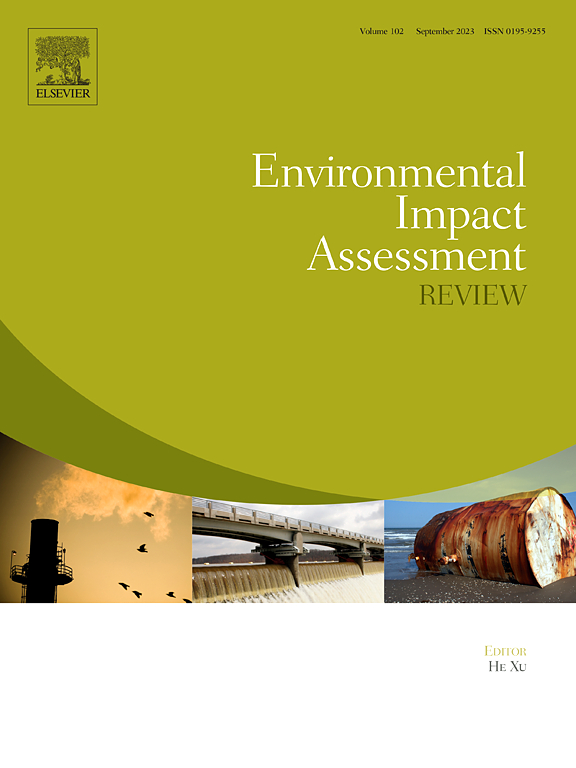Landscape management strategy for cultivated land ecosystem: New evidence from differentiation of supply and demand dynamics
IF 9.8
1区 社会学
Q1 ENVIRONMENTAL STUDIES
引用次数: 0
Abstract
Effective landscape management plays a crucial role in promoting the sustainability of cultivated land ecosystems and mitigating land degradation. While traditional research has primarily focused on the supply of cultivated land ecosystem functions (CLEFs), it has often overlooked the complex dynamics of societal demand, especially the theoretical framework for landscape management of cultivated land systems integrating supply and demand, nonlinear models and parameters for demand-side multi-scenario simulation, and accurate threshold boundaries rather than simple impact effect. This study addresses this gap by constructing a theoretical framework based on pattern-process, developing a methodological framework to predict CLEFs supply-demand under multiple scenarios, and using threshold regression to explore the boundaries of landscape patterns impact on CLEFs in Wuhan across various scenarios of Shared Socioeconomic Pathways (SSPs) with Representative Concentration Pathways (RCPs). The findings reveal heterogeneous effects arising from different mismatch types, highlighting variations in the effectiveness and thresholds of landscape regulatory measures. Specifically, landscape patterns were found to influence CLEFs through single and double thresholds. In regions with insufficient supply, thresholds under SSP1–1.9 were reached later compared to SSP2–4.5, whereas in areas with surplus supply, these thresholds were reached more quickly. Additionally, under SSP5–8.5, the transition from exacerbating to alleviating mismatches in grain production in undersupplied regions was shown to depend on technological advancements and improved resilience to climatic extremes. By elucidating the non-linear interactions between landscape patterns and CLEFs, this study provides valuable insights into achieving sustainability in coupled human-natural systems and addressing the challenges posed by urbanization and climate change.
耕地生态系统景观管理策略:来自供需动态差异的新证据
有效的景观管理对促进耕地生态系统的可持续性和缓解土地退化具有至关重要的作用。传统的研究主要集中在耕地生态系统功能的供给上,忽视了复杂的社会需求动态,特别是忽视了整合供需的耕地系统景观管理理论框架、需求侧多情景模拟的非线性模型和参数、准确的阈值边界而不是简单的影响效应。本研究构建了基于模式-过程的理论框架,建立了多情景下clef供需预测的方法框架,并利用阈值回归探讨了不同社会经济共享路径(ssp)和代表性集中度路径(rcp)情景下景观格局对武汉clef影响的边界。研究结果揭示了不同错配类型所产生的异质性效应,突出了景观调控措施的有效性和阈值的差异。具体而言,景观格局通过单阈值和双阈值影响clef。在供应不足的地区,与SSP2-4.5相比,SSP1-1.9阈值的达到时间较晚,而在供应过剩的地区,这些阈值的达到速度更快。此外,根据SSP5-8.5,供应不足地区粮食生产错配从加剧到缓解的转变取决于技术进步和对极端气候的抵御能力的提高。通过阐明景观格局与clef之间的非线性相互作用,本研究为实现人类-自然耦合系统的可持续性以及应对城市化和气候变化带来的挑战提供了有价值的见解。
本文章由计算机程序翻译,如有差异,请以英文原文为准。
求助全文
约1分钟内获得全文
求助全文
来源期刊

Environmental Impact Assessment Review
ENVIRONMENTAL STUDIES-
CiteScore
12.60
自引率
10.10%
发文量
200
审稿时长
33 days
期刊介绍:
Environmental Impact Assessment Review is an interdisciplinary journal that serves a global audience of practitioners, policymakers, and academics involved in assessing the environmental impact of policies, projects, processes, and products. The journal focuses on innovative theory and practice in environmental impact assessment (EIA). Papers are expected to present innovative ideas, be topical, and coherent. The journal emphasizes concepts, methods, techniques, approaches, and systems related to EIA theory and practice.
 求助内容:
求助内容: 应助结果提醒方式:
应助结果提醒方式:


